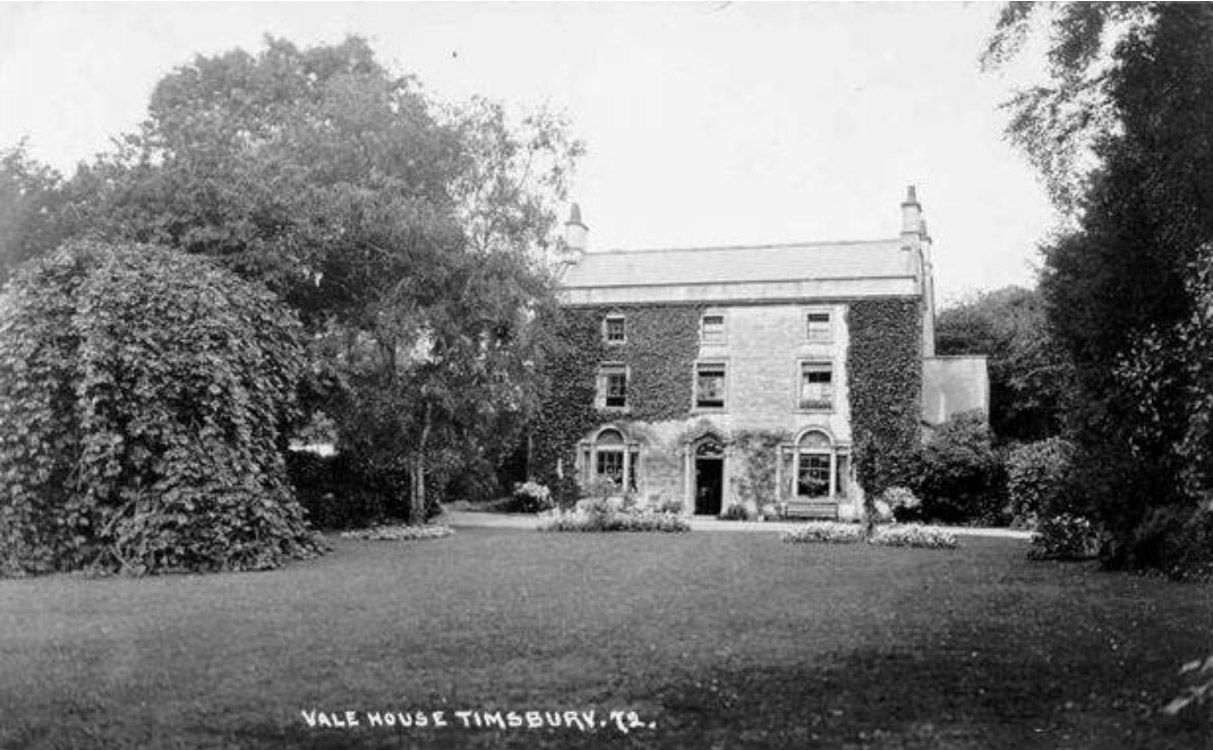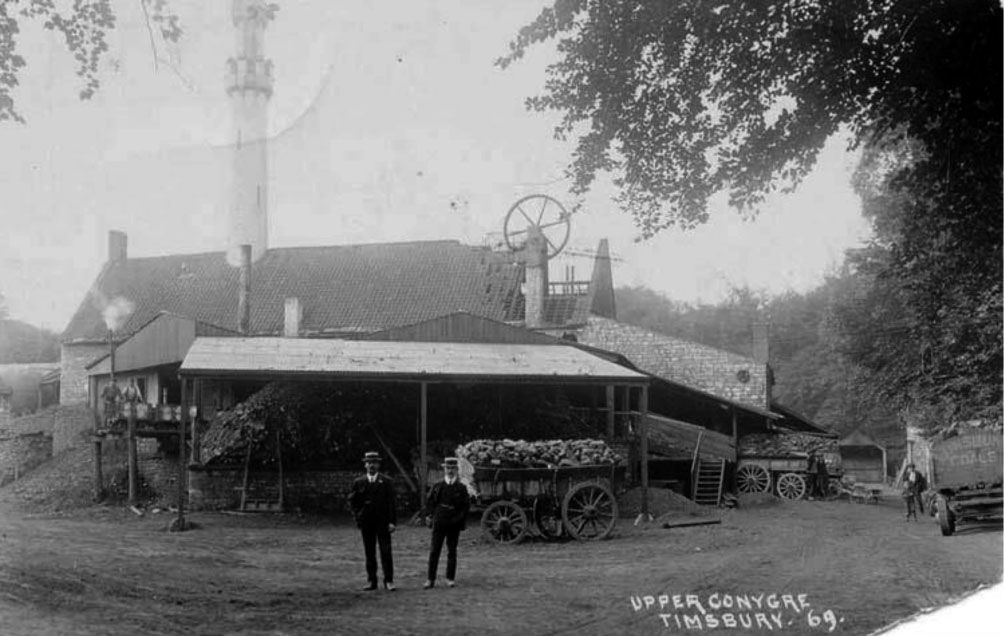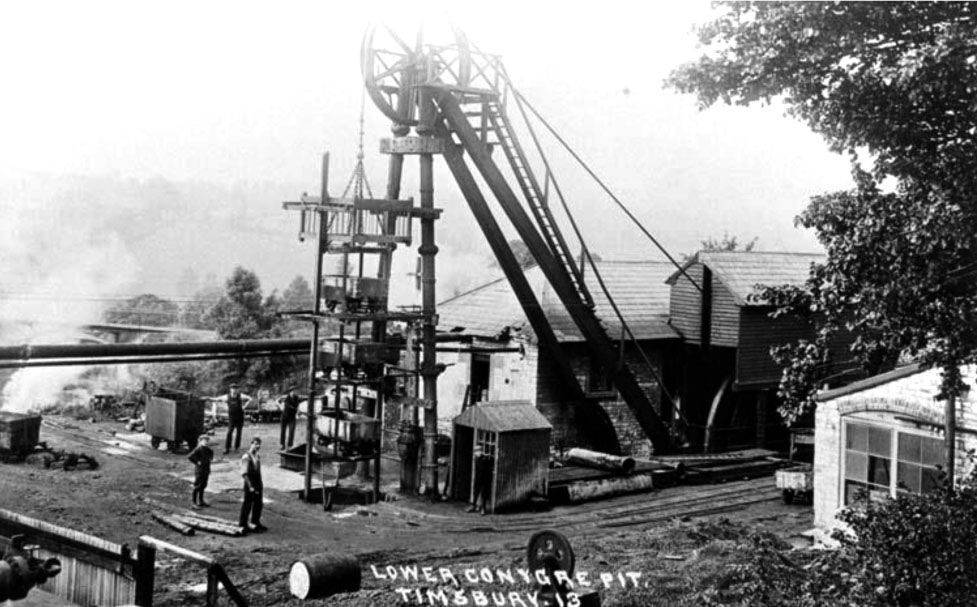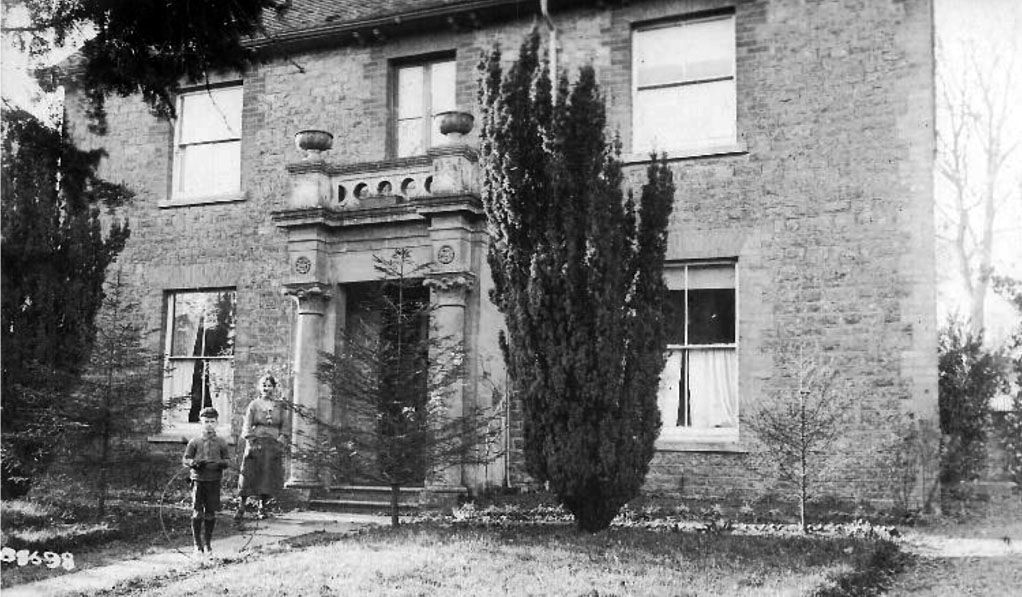Coal: The Langfords and the Webbs
“The Somerset Coalfield covered about twenty villages. Timsbury was at the centre of the Coalfield and at different times 11 pits were in operation. The earliest reference to coal mining in Timsbury can be found in John Sambourne’s will dated 1572. An account dated 1610 stated ‘it is said the works at Timsbury are near worn out…’. This early activity would have been where the coal seams were close to the surface or shallow ‘bell pits’ where men would have descended by ladder. Despite the pessimistic assessment of the state of the Timsbury pits, coal mining flourished in the 18th and 19th centuries”.
“The early pits were probably initiated by small partnerships which typically consisted of a coal miner and two local tradesmen, who would provide limited finance for a mining undertaking, hoping to make a profit between them. However by the second half of the 18th century as new and more sophisticated machines and equipment were introduced, the capital required by coalworks became even greater. The cost was beyond the local miner and local tradesmen, so mining partnerships were formed between larger numbers of people with money, such as the local gentry and wealthy financiers from further afield. To spread their risk the new mining partners would normally have small shares in several coalworks rather than a large share in one. Some grew rich and became very influential.
The names of the landowners who became very wealthy are very familiar – Sambourne Palmer, William and John Crang, John Parish, Robert Langford. All lived in Timsbury and most built large grand houses that reflected their wealth: Crangs – Pitfour House, Robert Langford – Vale House, John Parish – Parish’s House.”

“Both Upper and Lower Conygre Pits closed in 1916 thus ending a long tradition of coal mining directly in the village.”
“Robert Langford was part of that small group of land owners who became involved in coal mining. In 1784 he owned and occupied Dunford Farm in the Cam Valley below Timsbury. Robert Langford was involved in the development of Mearns Pit. Vale House was built in 1802. Soon after Robert died and Vale house was occupied by, first, his son Joseph (1772-1842) and then his grandson Joseph (1814-1873).”
The above from the Timsbury Community Website https://www.timsbury.org.uk/
In the early decades of the 19th century, coal from the Somerset coalfields is likely to have reached Steventon mostly by canal: “The Somerset Coal Canal (SCC - originally known as the Somersetshire Coal Canal) was a narrow canal in England, built around 1800. Its route began in basins at Paulton and Timsbury, ran to nearby Camerton, over two aqueducts at Dunkerton, through a tunnel at Combe Hay, then via Midford and Monkton Combe to Limpley Stoke where it joined the Kennet and Avon Canal. This link gave the Somerset coalfield (which at its peak contained 80 collieries) access east toward London.” Wikipedia “
Coal from pits all around this area was brought by tramway to Timsbury Basin and loaded onto narrow boats which transported it to the Kennet & Avon Canal at Dundas, a 10-mile journey. The K&A Canal gave access to markets in Bath and further eastward across Wiltshire and as far as Reading.” http://coalcanal.org/
Coal brought along the Kennet & Avon to Newbury Wharf could be offloaded and then brought up the turnpike to Steventon, Abingdon, and Oxford. The Wilts & Berks canal opened in 1810 and ran through the north west of Steventon parish, linking from the K&A in Wiltshire to the Thames at Abingdon, bringing coal from the Somerset coal fields to the towns of Wiltshire and Berkshire and enabling the transport of other goods. “The (SCC) canal now became one of the most successful in the country and, by the 1820s was carrying over 100,000 tons of coal per year. This prosperity was soon to be halted by the coming of the railways…... Railway competition was also hitting the Kennet and Avon Canal on which the S.C.C. depended for its markets.” http://coalcanal.org/ A video about the canal can be found at https://www.youtube.com/watch?v=ifW1N2wfDQ8 .
The opening of the Great Western Railway, to Steventon in 1840 and through to Somerset by 1841, brought change and coal started to arrive by train. See separate pieces about The Coming of the Railway, North Star, and FireFly. A video of a replica of the first train into Steventon is here: https://www.youtube.com/watch?v=urAwB6i1qzU . ‘
Our’ Robert Langford was born in Timsbury in 1823, the son of John (described at the time as a coalminer, but by 1841 as Parish Clerk) and Elizabeth (Betty): at that time Robert was described as a labourer. On Christmas Day 1845, after Banns being read on the three previous Sundays, Robert - described initially as a collier but this crossed out and changed to bookkeeper, given as living at the time in Cholsey - married Mary Bigwood, said to be living in Timsbury, daughter of Richard (a labourer) & Eleanor Bigwood, from Semington in Wiltshire: incidentally, Semington has a dock and two locks on the K & A Canal. Mary was 12-15 years older than Robert.
By the 1851 census Robert & Mary had arrived in Steventon, when he was described as a coal salesman with a depot in Steventon station yard: they lived on The Green, and had a lodger – George Sutton – who was a journeyman cordwainer (shoemaker). In 1861 Robert was listed as a coal merchant with the main contract to supply coal to Steventon railway station, employing his 19-year-old nephew Charles as a salesman. Charles was one of the sons of James Langford, a clerk and accountant in the coal business, and his wife Frances; Charles’ younger brother was Robert Smith Langford, born in 1845.
By 1871 Charles was not living with them, and indeed disappears from the record, but they had added a servant Sarah (Prior?). Meanwhile Robert Smith Langford (RSL) married Annie in Timsbury in 1870, and in the 1871 census they are living in Norbiton, Kingston, with RSL described as a coal agent.
From the 1870s Robert Langford arranged the building of Timsbury Villa and Timsbury Terrace (8 houses) all 1877, on the High Street; Prospect Place, (2 semis, 1882) and Somerset Terrace (4 houses, 1883) both on the Little Green.
Timsbury Villa - Left, undated postcard, note balcony above door case.
Right - now Timsbury House, with the Cassandra Lodge extension (furthest from the camera) Author photo 2022
Chris Brickwood



